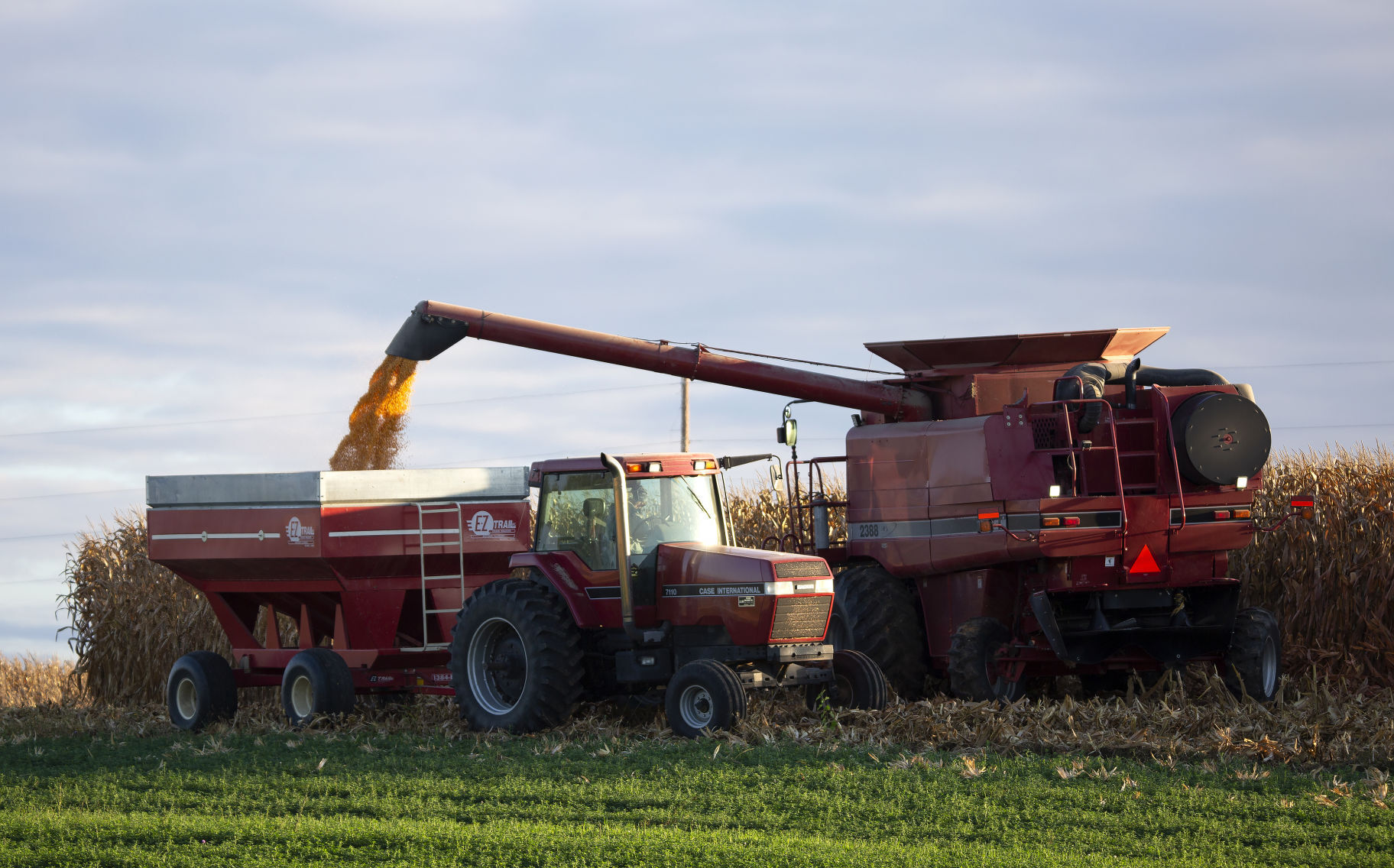This year’s harvest is well underway, and, according to area farmers, a dry summer doesn’t appear to have dampened crop yields.
“I would have to say the harvest is running ahead of schedule for the most part compared to a normal year,” said Craig Recker, president of Dubuque County Farm Bureau. “… If you give us two more weeks of good weather, a lot of this corn and soybeans will be out.”
The latest crop report released by the Iowa Department of Agriculture on Tuesday reported that 30% of the state’s corn crop has been harvested, eight days ahead of the five-year average. For soybeans, 56% of Iowa’s crop has been harvested, nine days ahead of the typical schedule.
Wisconsin’s crop report for Tuesday showed similar results, with 24% of the state’s corn harvested and 47% of soybeans. Those rates are 11 and eight days ahead of normal, respectively.
In Illinois, Tuesday’s crop report indicated that 55% of the state’s corn and 43% of soybeans had been harvested.
And, despite periods of drought conditions across the tri-state area this summer that left some farmers fearful, Recker said, crop yields are still strong.
“For the most part, yields are actually pretty good for as dry a summer as we’ve had — surprisingly good,” he said.
Larry Jerrett is a board member with the Grant County (Wis.) Farm Bureau who farms both corn and soybeans at his farm north of Lancaster. Although he hadn’t yet started to harvest his corn, he said soybeans were yielding about 50 to 65 bushels an acre, which he described as typical.
“And the corn doesn’t look as bad as I thought, but until I get into it, I can’t tell,” he said.
Recker said the area’s farmers can be grateful for increased rainfall toward the end of the growing season.
“In August, we caught the rains when we needed it, and that kind of made our crop, I think,” he said.
The National Weather Service reports that Dubuque received 5.53 inches of rain during the month of August, more than 1.5 inches above the typical rainfall total for the month.
Although September and the first part of October again showed low rainfall totals, a series of showers earlier this week forced farmers like Jerrett to pause their harvesting activities.
“It’s gotten into kind of a rainy spot here this last week or so,” he said.
But on the whole, the weather has been favorable as area harvesters complete their work. Recker also noted that crops are coming out of the field fairly dry, which means farmers will save money on propane often used to dry crops.
Looking ahead to next year, however, farmers are concerned about rising input costs, as prices for fertilizer are expected to spike.
“We’ve seen pretty astronomical raises in potash, phosphate and nitrogen (prices) for next year,” Recker said. “… The futures market on next year’s crop looks fairly favorable, but we’re going to need it with the higher input costs.”
Jerrett is not sure whether the farmers’ profits this fall will be enough to offset the rising input costs.
“If the commodities would cover it, it wouldn’t be such a bad deal, but I don’t think the commodities will cover the cost of increasing the inputs,” he said.



